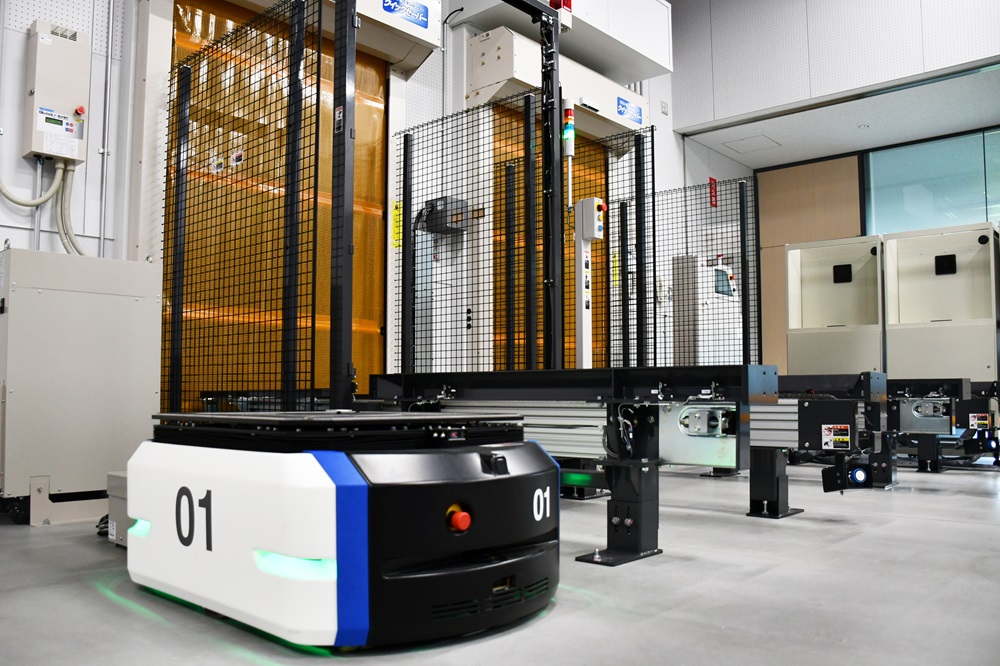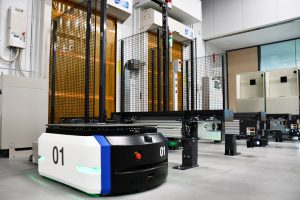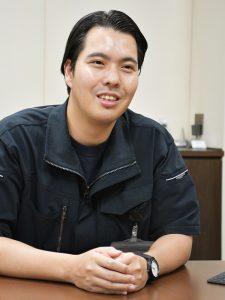
- News
- Basics
- Products
- JP Job shop
- Exhibition
- Interview
- Statistic
- PR
- Download
- Special contents
News
August 28, 2024

Nakamura-Tome Precision Industry (Hakusan, Ishikawa; President: Shogo Nakamura) is approaching the first anniversary of its assembly plant “MAGI,” which began operations in October last year. In its quest for an efficient production system, the company has introduced three Automated Guided Vehicles (AGVs) for the first time in its history to automate transportation tasks at the plant. In addition, the launch of MAGI has triggered a transformation in the manufacturing methods of multi-tasking machines, resulting in a 35% increase in production capacity and a significant reduction in manufacturing lead times.

AGVs integrated for the first time at Nakamura-Tome to automate transport operations
MAGI consists of three integrated factory buildings: the existing 11th and 12th factories, and the newly completed 13th factory, which was completed in July last year. These three buildings work together seamlessly, covering everything from unit manufacturing to the final assembly of machines. Previously, the assembly process was spread across multiple locations, causing frequent transportation and human traffic. By consolidating operations into MAGI, the company has streamlined the assembly area and optimized process management.
Since MAGI began operations in October last year, Nakamura-Tome has gradually relocated equipment from existing factories and introduced new systems to build an efficient production line. For instance, three AGVs have been installed on the second floor of the 13th factory, which is responsible for unit manufacturing. These AGVs, which became fully operational in August, have automated the transport of parts and finished units. “Replacing manual transport with AGVs has reduced our transport labor time by 480 hours per month, allowing our workers to focus entirely on assembly,” says President Shogo Nakamura.
With the launch of MAGI, Nakamura-Tome has also initiated a company-wide transformation in the manufacturing methods for its multi-tasking machines. One of the most significant changes is the adoption of “unit production.” This approach involves performing break-in operations and quality assurance at the unit level for various units, such as spindle units and index units, from the production stage. This approach minimizes adjustment work during the final assembly and contributes to shorter manufacturing lead times and improved product quality.

“We want to reduce production lead time,” says President Shogo Nakamura.
“Unit production offers advantages in troubleshooting and process management. We’ve already integrated this approach into our best-selling models, reducing manufacturing lead times from 25 to 15 days,” says President Nakamura. Combined with the streamlined assembly area, the focus on unit production has increased production capacity by 35%.
Furthermore, the company maintains a partial inventory of finished units in an automated warehouse within MAGI. By utilizing these units during final assembly, Nakamura-Tome has been able to significantly reduce lead times compared to fully made-to-order production. Recently, the ability to offer shorter delivery times, thanks to the unit inventory, has increasingly led to new orders.
“To promote the adoption of multi-tasking machines at manufacturing sites, it is crucial to supply products quickly, even during peak demand periods. To achieve this, we plan to further expand the use of unit production and further reduce manufacturing lead times,” concludes President Nakamura.